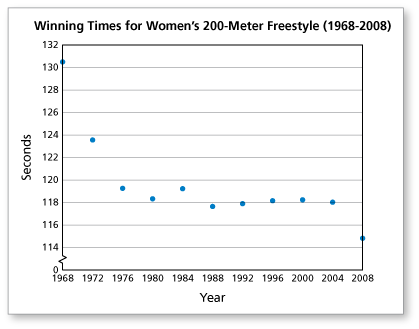-
A look at records set in various sports over the past century shows that humans continue to run faster, jump higher, and throw farther than ever before. What is allowing this to occur?
One factor is training. Physiologists are working to identify which systems in the human body limit performance. Then, training techniques are used to improve those systems. Also, sports psychologists work with individuals or teams to help them develop their minds to allow them to reach their peak performances. Also, physical trainers use devices to monitor athletes' bodies and provide them with more feedback on their performances than was available 20 years ago.
Equipment has also improved. For instance, bicycles are lighter and more aerodynamic than ever before. Even sports with no obvious technology, such as swimming, have benefited from technology. New swimsuits that reduce drag have reduced times even more.
-
The Olympic Games is an international event that includes the Summer and Winter Games, alternating every two years. Are you interested in learning more about the games? Visit the Olympic Games website to learn about past Olympic games, the athletes who have won medals, and the variety of sports performed at the games.
-
Enter the data into a spreadsheet and make a scatter plot.

The winning time decreased dramatically between 1968 and 1976. From 1980 to 2004, the winning time stayed close to 118 seconds. The Olympic record set in 1988 was not broken until 2008. Italian swimmer Federica Pellegrini's winning time in 2008 was not only an Olympic record, but a world record. In response to the large number of swimmers who broke world records in 2008, FINA banned rubberized swimsuits from competition in 2010. You can read more about FINA's ban on the controversial swimsuits here.
-
These comments are not screened before publication. Constructive debate about the information on this page is welcome, but personal attacks are not. Please do not post comments that are commercial in nature or that violate copyright. Comments that we regard as obscene, defamatory, or intended to incite violence will be removed. If you find a comment offensive, you may flag it.
When posting a comment, you agree to our Terms of Use.






Read more on the andYOU blog: http://www.andyou.com/blog/math-in-the-news/math-in-the-news-olympic-trials/